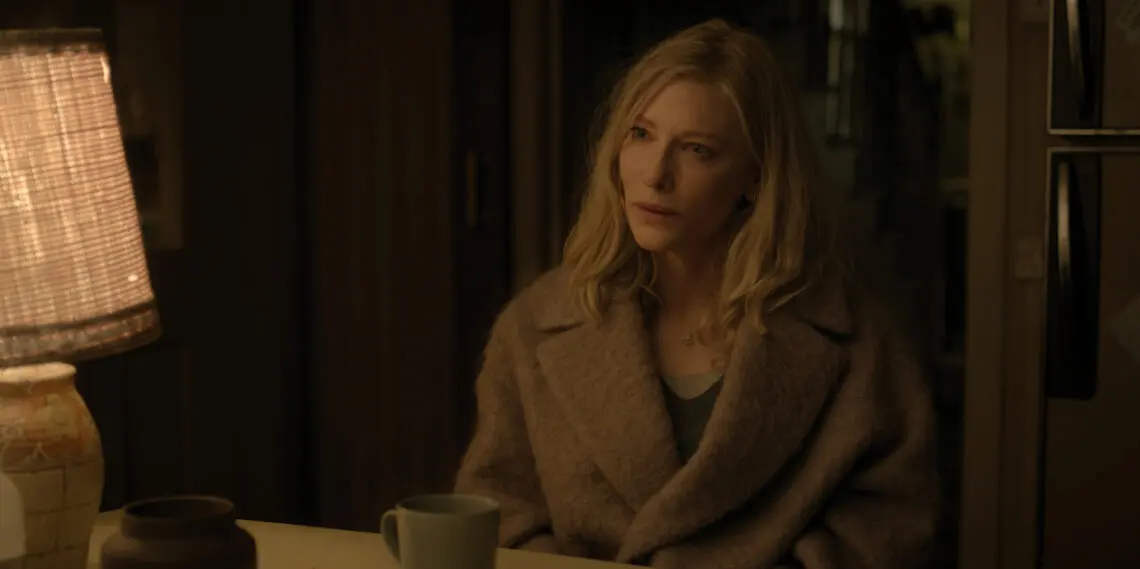Behind the shock twist in ‘Disclaimer:’ Cate Blanchett and Alfonso Cuarón reveal all
Unraveling the plot: a game-changing revelation
Warning: The following contains spoilers for “VII,” the finale of “Disclaimer,” now streaming on Apple TV+.
The final moments of Disclaimer will leave you reeling. The show’s intricate narrative, which builds up to a shocking climax, sees Stephen (portrayed by Kevin Kline) on a restless quest for vengeance over the tragic death of his son, Jonathan. All along, viewers are led to believe that the villain of this sorrowful tale is Catherine (embodied by Cate Blanchett). Stephen is convinced that Catherine, during their romantic escapade in Italy ages ago, let his son drown. This belief, shared and perpetuated by his late wife Nancy through her ominously written novel, ruins Catherine’s standing both within her family and in her professional life as a documentarian.
The long-hidden truth
Things take an unexpected turn when Catherine reveals the truth to Stephen. In a heart-wrenching scene that took days to film, she discloses the traumatic assault she endured for hours at the hands of Jonathan. She’s carried this burden of trauma along with the guilt of Jonathan’s death, which occurred while trying to save a child she had unfortunately let out of sight. It’s a revelation that reframes everything Stephen believed and brings to light the distorted and misleading nature of the evidence he held. For six episodes, Catherine silently endures the false narrative that Stephen has meticulously spread. In the crucial seventh episode, she can no longer contain her truth.
Crafting a nuanced character
During a recent discussion about the climactic end of Disclaimer, both Cate Blanchett and director Alfonso Cuarón shed light on the intricate crafting of Catherine’s character. Cate noted that the complexity of Catherine lies in how, for most of the show, she’s seen through the lens of others’ perceptions. It wasn’t merely an act of portraying Catherine’s story but ensuring every detail was grounded in reality. “The work for that moment was done throughout the other six chapters,” says Cuarón, emphasizing the painstaking efforts and adept collaboration with Blanchett.
When Catherine finally expresses her truth, the audience learns that their perception was skewed by judgments – not just those from other characters but from themselves as well. Blanchett conveyed that Catherine’s reconciliation with her past and herself was vital. The character’s reluctance to talk to her husband earlier stems from the unbearable guilt she felt, and it’s only in the finale that she finds the strength to open up, even if it means stripping away all societal masks.
The catharsis of storytelling
“Sometimes we can’t unpack these things by ourselves,” adds Blanchett, diving deeper into the complexity of dealing with trauma and the societal pressure not to speak out. The scene didn’t manifest as a quest for vengeance but rather as a desperate plea for clarity and understanding. This, she articulated, is a reality many assault survivors face – the harrowing experience of revealing their trauma and not being believed, adding layers of re-traumatization.
In Disclaimer, Catherine’s tumultuous relationship with Stephen, marked by their conflicting memories and perceptions, finally collides to bring an unfiltered truth to light. Blanchett describes the experience of revealing the truth to someone who wishes her harm as a nightmare, likening it to a runaway train once the story is let out.
Technical excellence: filming the confrontation
Cuarón’s approach to the climactic confrontation was meticulously planned. They recorded the sequence over a span of two days to genuinely capture the present tense of Catherine’s confession while minimizing exploitative depictions of the past. This method allowed the actors to fully immerse themselves in the scene, lending authenticity to the emotionally charged moments.
When discussing the technical challenges of filming the long takes, which have garnered much acclaim, Blanchett recounts the demanding yet gratifying process. Working closely with cinematographer Emmanuel Lubezki, the ensemble filmed for days in a sequential order to maintain authenticity. This built-up to the climactic dam-breaking sequence of Catherine’s revelation, turning an otherwise logistical challenge into a thrilling culmination.
An actor’s journey
For Blanchett, the sequential filming and the emotionally demanding scenes culminated in a powerful release. “When I finished that scene, at the end of the last take, I just went berserk,” she reminisced, relaying the sense of relief that came with completing such an intense performance. The unique filming approach, despite the strenuous demands, allowed for a naturalistic unfolding of the storyline and deep character exploration.
Blanchett’s portrayal of women enduring undue professional and personal repercussions – a theme explored in previous works as well – remains relevant and compelling. Her aim was to create a character porous and ambiguous enough for the audience to view her through different character perspectives.
Blanchett’s efforts, coupled with Cuarón’s direction, have established Disclaimer as a standout narrative exploring the human psyche and the pursuit of personal truth amidst external judgments. Catch Disclaimer here, and witness a masterclass in storytelling.
For more insightful discussions on groundbreaking shows, share this article on social media and follow our site for updates on the latest in television and cinema.

 Italian
Italian







